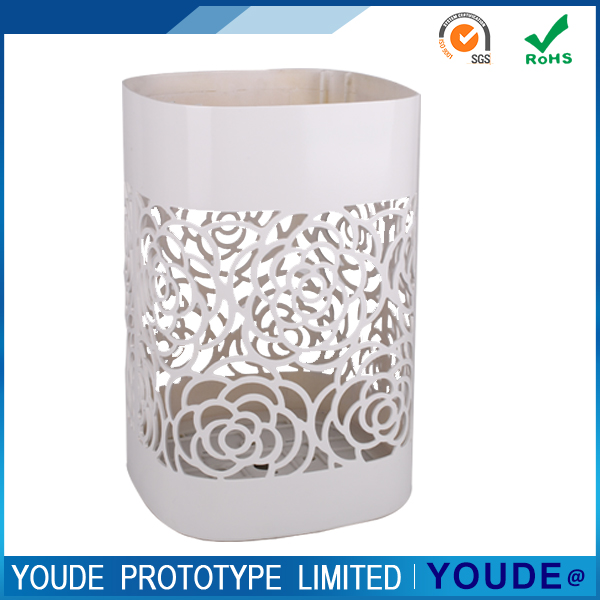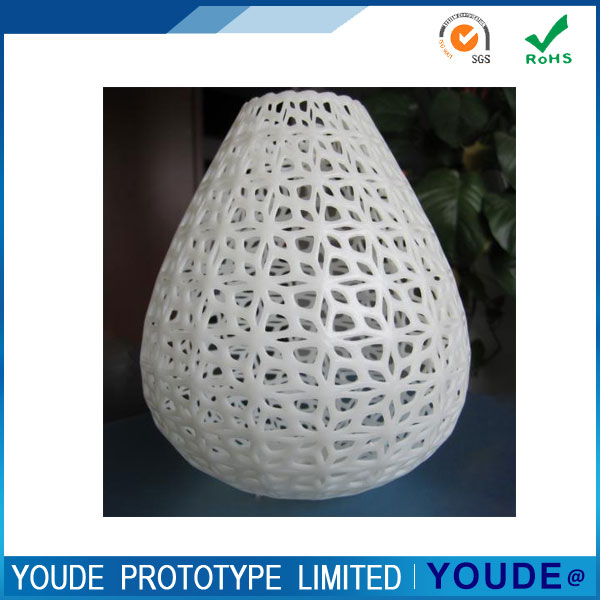6 Tips for Improving 3D Printing Engineering Models
3D printing technology is provide convenient design opportunities for the next generation of rugged, complex and lightweight parts. You can make parts which are almost impossible to manufacture with traditional methods. The design of metal parts is very different from the corresponding plastic parts. There are constraints on the specific architecture of the machine and the use of functions in the metal 3D printing process.
To help you with a project, here are a few tips for improving 3D printed parts, which can be universally applied to any metal 3D printing process:
Use lattice to reduce product weight
The lattice structure helps to remove a large amount of mass from the solid part while maintaining strength. 3D printing can help you "hollow out" these areas in the wall so as not to affect the final appearance of the part.

Use conformal cooling channels
Conformal cooling is one of the great advantages brought about by 3D printing. The product can be designed as an injection mold that follows any internal contour cavity to greatly improve the cooling efficiency and the quality of the finished parts. The manufacturer can set the printing channel as needed to make it conform to any shape.
Management hole support angle
If the wall or inclined support is tilted too much from the vertical plane, it may be degraded / collapsed due to gravity.We recommend that the angle of the wall angle is greater than 45 °, and the bottom surface less than this value will especially lose resolution or collapse, and may require post-processing or other structural support.
The diameter of the management hole should be greater than 10mm
If the hole is placed vertically, the upper arc will not be supported, so it may also deform or collapse, or it may affect the function of the part.

Removable function
Another advantage of 3D printing is the ability to construct shapes that move freely after printing, which opens up new design opportunities for complex next-generation electromechanical devices and even innovative 3D printing.
Keep the drape below 0.5mm
Draping is a feature that protrudes laterally from the direction of construction. The area of concern here is the lower surface area, which may begin to collapse if it overhangs by 0.5 mm or more. You can use concave, convex, or chamfered corners to redesign the angle between the side features and the vertical plane for self-support.
When removing metal 3D printing engineering models from the machine, the appearance will be somewhat rough. This is because they are made by welding countless tiny powdered metals together, so these parts also need to be polished.
We can provide advice on material selection, tolerance, support structure, part orientation, post-processing, etc. When you contact us to get a free quote for the project, our technical staff will work closely with you.
To help you with a project, here are a few tips for improving 3D printed parts, which can be universally applied to any metal 3D printing process:
Use lattice to reduce product weight
The lattice structure helps to remove a large amount of mass from the solid part while maintaining strength. 3D printing can help you "hollow out" these areas in the wall so as not to affect the final appearance of the part.

Use conformal cooling channels
Conformal cooling is one of the great advantages brought about by 3D printing. The product can be designed as an injection mold that follows any internal contour cavity to greatly improve the cooling efficiency and the quality of the finished parts. The manufacturer can set the printing channel as needed to make it conform to any shape.
Management hole support angle
If the wall or inclined support is tilted too much from the vertical plane, it may be degraded / collapsed due to gravity.We recommend that the angle of the wall angle is greater than 45 °, and the bottom surface less than this value will especially lose resolution or collapse, and may require post-processing or other structural support.
The diameter of the management hole should be greater than 10mm
If the hole is placed vertically, the upper arc will not be supported, so it may also deform or collapse, or it may affect the function of the part.

Removable function
Another advantage of 3D printing is the ability to construct shapes that move freely after printing, which opens up new design opportunities for complex next-generation electromechanical devices and even innovative 3D printing.
Keep the drape below 0.5mm
Draping is a feature that protrudes laterally from the direction of construction. The area of concern here is the lower surface area, which may begin to collapse if it overhangs by 0.5 mm or more. You can use concave, convex, or chamfered corners to redesign the angle between the side features and the vertical plane for self-support.
When removing metal 3D printing engineering models from the machine, the appearance will be somewhat rough. This is because they are made by welding countless tiny powdered metals together, so these parts also need to be polished.
We can provide advice on material selection, tolerance, support structure, part orientation, post-processing, etc. When you contact us to get a free quote for the project, our technical staff will work closely with you.
评论
发表评论